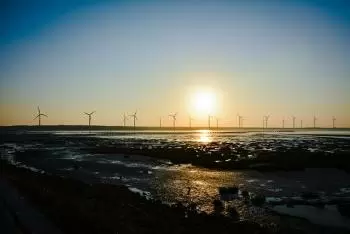
A clean energy is an energy source in which there is no emission of greenhouse gases such as carbon dioxide or other pollutants. They are types of energy that respect the environment and do not contribute to climate change on Earth.
Traditionally, the main way to generate electricity has been through the combustion of fossil fuels (mainly coal and natural gas). Fossil energy is one of the main sources of polluting gas emissions.
When solar radiation reaches the earth, part of this radiation bounces off the surface. Some of this bounced radiation gets trapped in particles in the atmosphere, and the rest goes back into space.
This capture of energy is necessary to keep the planet at a temperature suitable for life. However, the excess of gases in the atmosphere causes the captured heat to be excessive, giving rise to global warming of the planet.
Is clean energy the same as renewable energy?
Clean energy and renewable energy are different concepts.
A renewable energy source is an energy source that uses an inexhaustible resource, but it does not imply that it is clean.
For example,
-
Biomass is a renewable energy source but it generates greenhouse gases.
-
Nuclear energy does not emit polluting gases but it is neither renewable (uranium is limited) nor is it clean (it generates radioactive waste).
-
Solar energy and wind energy are clean and renewable energies, since they do not pollute and use inexhaustible resources.
-
Fossil energy is neither clean nor renewable as it emits greenhouse gases and the fuel used takes millions of years to regenerate.
Characteristics of clean energy
Clean energies meet the following characteristics:
-
All clean energy is renewable (but not vice versa).
-
They do not generate polluting residues such as radioactive waste.
-
They do not emit greenhouse gases, therefore they do not contribute to global warming or climate change.
-
Reduce dependence on other polluting energy resources.
-
Its exploitation is environmentally sustainable.
Examples of clean energy sources
Below we list 6 examples of clean energy sources.
1. Solar energy
Solar energy is that form of clean and renewable energy produced by the exploitation of sunlight or by the rays that the sun radiates towards the Earth.
The solar energy that reaches the earth's surface is 10,000 times higher than all the energy used by man and is used efficiently for the production of heat and electricity thanks to photovoltaic panels.
2. Hydraulic power
Hydroelectric power takes advantage of mechanical force and water is obtained from rivers and lakes thanks to dams and floodgates.
The potential energy of high-altitude bodies of water is transformed into kinetic energy, from which electricity is then produced by an alternator with a turbine.
3. Tidal energy
Tidal energy is capable of transforming tidal energy and transforming it into electrical energy. The gravitational influence of the Moon generates differences in height of the sea level.
When the tide is high, water is collected by coastal reservoirs and when it is low it is released to drive hydraulic turbines.
4. Wave energy
Wave energy takes advantage of the movement of waves and the displacement of water caused by tides and marine currents. Also called wave energy.
5. Wind power
Wind energy uses the kinetic force of the wind to produce electrical or mechanical energy. Wind turbines are windmills that transform the force of the wind into electricity.
6. Geothermal energy
Geothermal energy uses heat from the Earth's interior and from areas of volcanic formation for the production of clean, renewable energy.
As you descend deeper into the Earth's crust, temperatures tend to rise, averaging 3°C per 100 meters.
By taking advantage of the heat from these areas, through the principle of geothermal energy, it is possible to recover energy by transporting the vapors from the subsoil to the turbines used for the production of electricity and taking advantage of the water vapor for heating or other uses.
7. Nuclear power
Although nuclear energy is not a renewable source, it is part of the clean energy group because it does not emit greenhouse gases. Although nuclear power plants generate radioactive waste, this waste can be treated and contained in ways that do not harm the environment.